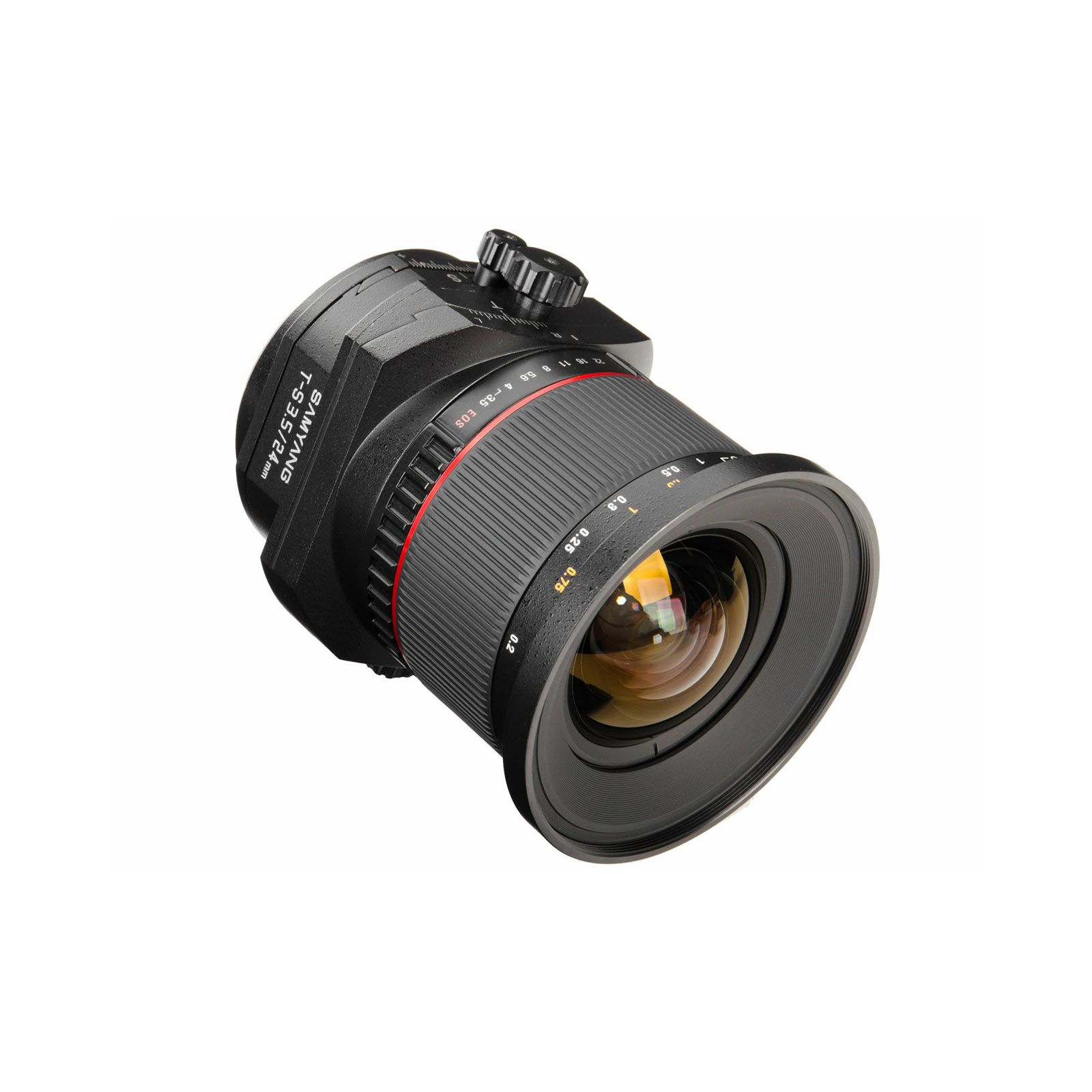
Let’s all remember, though, that these are tilt-shift lenses. The Nikon lens clearly resolves a bit better in the center than the Samyang, although in the corner area things are pretty even. Unfortunately, one of the 4 Nikon-mount Rokinon copies we received was badly decentered, so we only averaged the test results for the other 3 copies, averaged in the table below. (In previous tests we’ve done, the same lens will have an MTF from 15% to 20% higher on a D800 than a 5D II.) We did our Nikon-mount tests on a D800, so the higher camera resolution would be expected to give significantly higher MTF 50 numbers than the Canon 5D II. I thought measurements against the Nikon 24mm PC-E lens might be more even since the Nikon is a much older design that is probably due for a makeover soon. Put simply, the Samyang 24 TS-E resolution is adequate – not great but not awful, either. Since most people probably haven’t shot with the Canon 24 TS-E, I included the resolution numbers for the Canon 24-105 f/4 IS just to give a widely known comparison point. It’s a bit unfair to compare the Rokinon with a $2,000 lens that is widely recognized as one of the sharpest tilt-shifts made, but that’s the most direct comparison. The numbers represent MTF 50 in the center, averaged across the entire lens surface, and the average of the 4 near-corner areas. The table below shows the results for the Rokinon versus the Canon 24mm f/3.5 TS-E L. We tested 4 copies in Canon mount on our Canon 5D Mk II test cameras in the usual fashion. Plenty of lens reviewers will be comparing tilted and shifted images, soon, though. Unfortunately, Imatest results can only be obtained with the lens in straight position, so we can’t compare tilted and shifted. The Canon 24mm TS-E can match all these functions, but the Nikon can’t match the rotations. The Samyang control knobs are smaller and less indented than either the Nikon (shown) or Canon.Īs far as function, though, the Rokinon gives everything you would ask: 8.5 degrees of tilt, 12 degrees of shift, rotating base and the shift and tilt axis can be rotated so they are aligned or at right angles to each other. The Samyang does NOT come with a hood, which the other two have, although they are very shallow hoods that probably aren’t particularly effective. The Canon weighs in at 780 grams (27.5 ounces), the Samyang at 680, and the Nikon at 730 grams. The first noticeable thing when comparing the Canon 24mm f/3.5 TS-E II, Nikon 24mm PC-E, and Rokinon 24mm TS lenses is the weight. So I’ll admit that going in I was a bit skeptical of this lens. If it breaks getting a new one won’t be much more expensive than the standard repair cost for a Canon 14mm and less than the repair cost of a Nikon 14-24.īut a tilt-shift is a lot more complex than a simple prime lens, and the RokiBowYang 24mm tilt-shift costs a lot more than their 14mm. For that price, compared to $2,300 for a Canon 14mm, I’m more than willing to give up autofocus, accept some barrel distortion, and consider it disposable. I own their 14mm because at $379 I think it’s an insane bargain for a very sharp lens. I should mention I’m a bit of a Rokinon fan. On the other hand, good optics at prices like they offer makes the build-quality trade off more than acceptable. Construction quality has been rather iffy, and getting one repaired nearly impossible. The company’s other offerings have all had excellent optics. For shooters of other systems, it offers a tilt-shift option they may not have had at all.


For Canon and Nikon shooters, it offers a 24mm tilt-shift alternative for around half the price of the brand name lenses. The release of the Rokinon 24mm f/3.5 Tilt-shift lens (also branded as Samyang or Bower) has created quite a bit of excitement.


 0 kommentar(er)
0 kommentar(er)
